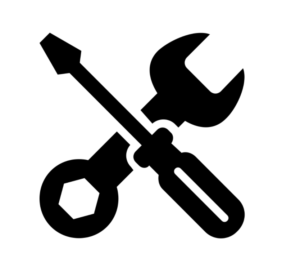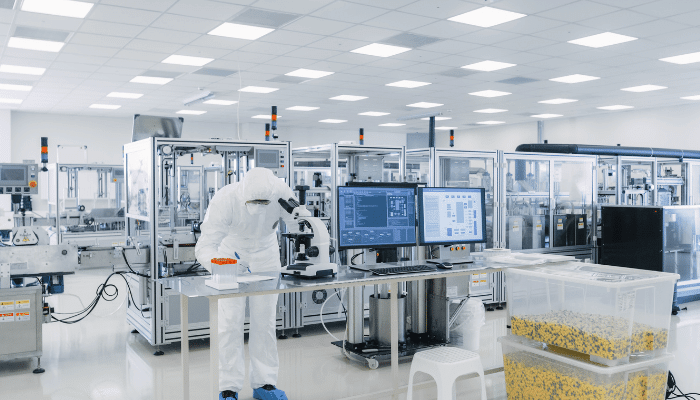Preventive vs predictive maintenance, each of these maintenance strategies will help improve the longevity of equipment. Regular maintenance will help to keep your assets healthy, reliable, and running at peak performance. Machine downtime gets expensive, even just a few minutes of downtime can be extremely costly. Putting a strong emphasis on machine maintenance will help you to avoid machine failure and reduce operational costs on the plant floor.
Whether it’s preventive or predictive maintenance, consistency is key. Maintenance is something that you have to keep up with constantly. Inconsistent maintenance can nullify all of your previous efforts, and lead to asset failure.
So what are the differences between preventive maintenance vs predictive maintenance? What are the similarities? Which one is more effective? Which one is best for you?
In the following parts of this article, we will answer each of these questions.
Preventive Maintenance
Preventive maintenace is consistent and routine scheduled maintenance of machines and assets in order to keep them running optimally and prevent expensive unplanned downtime and unexpected asset failure. A successful preventive maintance strategy requires strong stragtegic planning before a stoppage or failure occurs.
Predictive Maintenance
Predictive maintenance falls in line with proactive, data-driven mainteance strategies that gather data and analyze the health and condition of an asset to assist in predicting when the asset should receive maintenance.
The main difference between preventive and predictive maintenance is that preventive is performed on a linear schedule. With a preventive maintenance strategy, you might schedule out a work order for maintenance every 4 weeks. Then, maintenance should be performed precisely on that date, exactly 4 weeks from the last maintenance work order. Whereas predictive maintenance can be a little bit more sporadic. Predictive maintenance uses data to determine when maintenance should be performed. Consequently, maintenance will not be performed on a linear schedule. The schedule might be 3 weeks, then 6 weeks, then 2 weeks, all over the place and only performed when needed.
This makes predictive maintenance a more complex strategy. However, it also has some valuable advantages over preventive maintenance that make it worth the initial setup. We will dive deeper into the advantages later in this article.
Preventive Vs Predictive Maintenance: Similarities
Preventive and predictive maintenance are both strategies that are planned out ahead of time, making each of them a form of scheduled maintenance.
The biggest similarity between the two is the overall goal. Both strategies are there to increase health and reliability, as well as prevent stoppages, costly downtime, and asset failure on the plant floor.
Sometimes the term preventive maintenance gets confused with predictive maintenance simply because all forms of maintenance are in place to prevent something. Technically this makes all maintenance “preventive” maintenance.
However, here’s the issue- you can use the word preventive when referring to predictive maintenance, but, when referring to preventive maintenance, you cannot accurately interchange with the word predictive. It’s better to keep the terms separate for clarity.
Preventive Vs Predictive Maintenance: Which is More Effective
Predictive maintenance is the most effective form of maintenance. There are a number of reasons for this. I mentioned earlier that predictive maintenance is more complex, but also comes with its advantages. It’s more complex because there’s more setup and technology involved. Preventive maintenance can be as simple as reading the manual for the equipment and setting up a maintenance schedule incrementally as recommended.
This type of system is similar to the way the majority of us maintain our cars. You take it into the shop, they perform an oil change, replace the oil filter, maybe some other maintenance you need. Then they tell you to come back in 3 months or 3,000 miles. There’s no data or new information behind that decision, you are scheduled to come back in 3,000 miles this time, and next time, and next time, etc.
This sounds like a proven system, right? Well, yes it is. However, just because it works, doesn’t mean that it is the most efficient system. Back to manufacturing, each machine will have a different optimal maintenance schedule.
Predictive Maintenance runs on Data
The only way that you can find the optimal schedule is by gathering and analyzing data. If you have no substance or information, it’s near impossible to make an informed decision based on what is happening on the inside of the machines. One machine might not need some type of maintenance as regularly. A different machine might be deteriorating because it needs more attention, more maintenance than the standard recommendation. However, without the data, you won’t know that the machine was unhealthy until it fails prematurely. On the other hand, if you are over-maintaining you will never know, and you will just keep unnecessarily throwing money away.
You could argue that a little bit of over-maintaining is fine. That the point of maintenance is to make sure everything is in tip-top shape all the time. While this is true to an extent, the overall goal is actually to reduce operating costs. Whether those costs are over-maintaining or unplanned downtime. So, over-spending on maintenance would be counterintuitive.
Machines are generally inconsistent and tough to accurately predict, we need a continuous flow of real-time data to help make informed data-driven decisions on the plant floor. Predictive maintenance taking advantage of real-time data is what makes it the most effective maintenance strategy.
Preventive Vs Predictive Maintenance: Which is Best for You?
Predictive maintenance is the most advanced and effective form of maintenance. However, that does not automatically mean that it’s the best option for you today. It should, at the very least, be a goal to become a completely data-driven company and include predictive maintenance in your strategy. However, not all companies are at that stage, a great number of manufacturers still choose not to implement real-time data systems such as IIoT or manufacturing analytics. There are also some companies that are trying to adapt to data-driven manufacturing but aren’t far enough along in their journey yet.
For these companies, it might be a good idea to stick to preventive maintenance in the short term. But still, start gathering small amounts of data to work towards becoming a data-driven manufacturer.
The bottom line is that you should be continually improving your process, and keep working towards creating the most efficient factory possible.







